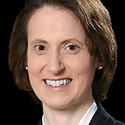12:00 PM
How SPARTA Automated Underwriting Controls
Due to its ever-evolving program-based underwriting model, SPARTA Insurance Company worked closely with its program distribution network to write and renew policies from the insurer's inception in 2007. But the high-touch, resource-intensive method proved reactive when it came to mitigating risk.
"Our PAs [program administrators] are given underwriting authority within defined guidelines," explains Enrico Ferrante, SVP of underwriting services for the Hartford-based insurer. "However there are inherent downside risks with giving PAs such authority."
"For example," he continues, "even though our underwriters work with each PA [program administrator] daily, evaluating whether PAs accurately followed underwriting rules only occurred after policies were issued, during auditing. Instead of making reactionary corrections as the result of an audit, we wanted to implement a proactive approach."
In early 2010 SPARTA ($350 million in total assets) reviewed the technology available from its policy administration platform partner, Insurity. "It offered a hosted Underwriting Rules module that we could expose to our PAs and their staff," recalls Ferrante. "But it was too immature."
SPARTA considered seeking other alternatives, but decided to await refinements to the Insurity offering. "Insurity's rules module was integrated with its policy administration platform, Policy Decisions, which we house on-site," Ferrante says. "And, we liked the way Insurity treated us as a partner – we felt like they were an extension of our organization."
By the end of 2011, SPARTA decided the time was right. "Not only was the module more robust, but it also permitted us to maintain it ourselves," Ferrante says. "The self-maintenance capability was critical because our underwriting guidelines change from year-to-year."

Enrico Ferrante, SPARTA
Early in 2012 Ferrante and a SPARTA business analyst began of collecting requirements and determining which rules could be automated. "We worked closely with our larger PAs," notes Ferrante. "Along with our underwriters, we held physical meetings with them as well as web conferences where they helped us shape the process."
From those meetings, a plan evolved to rollout the technology in two phases. First would be automation of generic rules used by all PAs. Phase two was engineering customized guidelines that several larger PA firms requested.
The first phase also included training SPARTA to use Insurity's Underwriting Rules module for both generic and custom underwriting guidelines. "Learning the technology was the easy part of the deployment process," Ferrante reports. "It only took a few weeks on a part-time basis.
According to Ferrante managing change with its PAs proved more challenging. To surmount this hurdle, SPARTA not only involved but also provided collaboration opportunities and extensive training, including a supplemental on-demand video posted to the insurer's website. "In addition to teaching PAs and their employees to use the technology, we also emphasized that this was their rules engine," Ferrante says. "We asked for their input, which ultimately gave us ideas for additional rules."
By mid-2012 the generic rules engine was complete and the rollout proceeded smoothly. During the second half of the year SPARTA and its PAs completed the initial round of custom rules went live, marking the end of phase two. "But we're never really 'finished' with the rollout," comments Ferrante. "It's always evolving. Moving forward, we'll continue creating and automating even more complex rules."
Regardless, Ferrante says the effort is worth the price. "It only takes mitigating one bad risk for the system to pay for itself many times over," he points out. "The engine has definitely stopped exposures from being included in quotes as well as blocking entire quotes. So we know we've avoided risks outside our underwriting guidelines."
"We're even using the tool as a price driver," he adds. "We already have some pricing rules in the system and continue looking for more opportunities. Overall, the engine is everything we wanted and then some. It's a tremendous benefit to our company's bottom line."
Anne Rawland Gabriel is a technology writer and marketing communications consultant based in the Minneapolis/St. Paul metro area. Among other projects, she's a regular contributor to UBM Tech's Bank Systems & Technology, Insurance & Technology and Wall Street & Technology ... View Full Bio





















